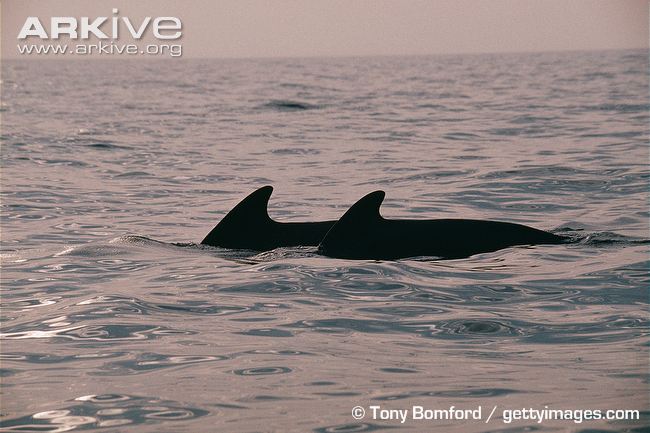Habitat
The long-finned pilot whales’ (Globicephala melas) habitat is found within the marine ecosystem, but the region within this ecosystem varies with the seasons due to the movement of their prey (Taylor et al. 2008). For the most part, during the summer and fall seasons the pilot whales tend to move inshore toward the continental shelf region of oceans, but sometimes this varies with geographical region (Taylor et al. 2008). There is also a wide temperature range due to the regions they exist in at different times of the year that is also an important aspect to the Globicephala melas’ habitat (Taylor et al. 2008)
Long-finned pilot whales mostly live in temperate and sub polar zones, but also in coastal areas of the North Atlantic. They move inshore toward the continental shelf of oceans during the fall and summer, but in other areas of the world this may differ (Taylor et al. 2008). In areas like the western North Atlantic ocean, the long-finned pilot whale tends to spend most of its time in the winter and spring months by the continental slope, but then moves off and into deeper waters during the summer and fall months (Taylor et al. 2008).
Some specific areas this species inhabits include areas like the North Sea, the western portion of the Mediterranean Sea, and also the Gulf of St. Lawrence. Long-finned pilot whales live in many different areas of the world, but one of the most important habitats to this species is the Alboran Sea located in the Mediterranean (Taylor et al. 2008). The average depth of this sea is about 850 meters, and ranges from 300 meters to 1,800 meters in depth, mirroring the depth of their preferred prey, squid. Areas where long-finned pilot whales have been sighted include: the edge of the continental shelf near Chile, in the southeastern South Pacific Ocean, in the southwestern South Atlantic Ocean, off the shore of Tierra del Fuego, and even in areas south of the Antarctic Convergence (Taylor et al. 2008).
The water temperature range the Globicephala melas normally resides in varies anywhere from 0 to 25°C (Taylor et al. 2008) and their diving depths can vary from 30 meters to 1,800 meters (Preston 2011). The long-finned pilot whale live with many other pilot whales in their habitats along with the prey they follow. The prey that they coexist with include: squid, mackerel, cod, turbot, herring hake, dogfish, and other moderately sized fish (Taylor et al. 2008).
In conclusion, the habitat regions and migrational patterns throughout the seasons of the Globicephala melas are mainly due to the movement of their prey. Overall, throughout the summer and fall seasons the long-finned pilot whales can be found inshore toward the continental shelf region of oceans, but as discussed, sometimes this varies. While the temperature of their climate is not stable, it mainly stays between 0 and 25°C (Taylor et al. 2008).

